Akagera National Park is located in eastern Rwanda along the border of Tanzania. It is a must-see attraction during a visit to Rwanda! It takes approximately 2.5 hours by car to reach the entrance (southern gate) from Kigali and about 3 hours from the exit (north gate) back to Kigali. The park is home to Africa’s “big five“, the lion, leopard, elephant, rhinoceros, and buffalo. In our opinion, it is not necessary to hire a guide, as it is easy enough to do on your own. We break down everything you need to know in this self-drive safari guide for Akagera National Park.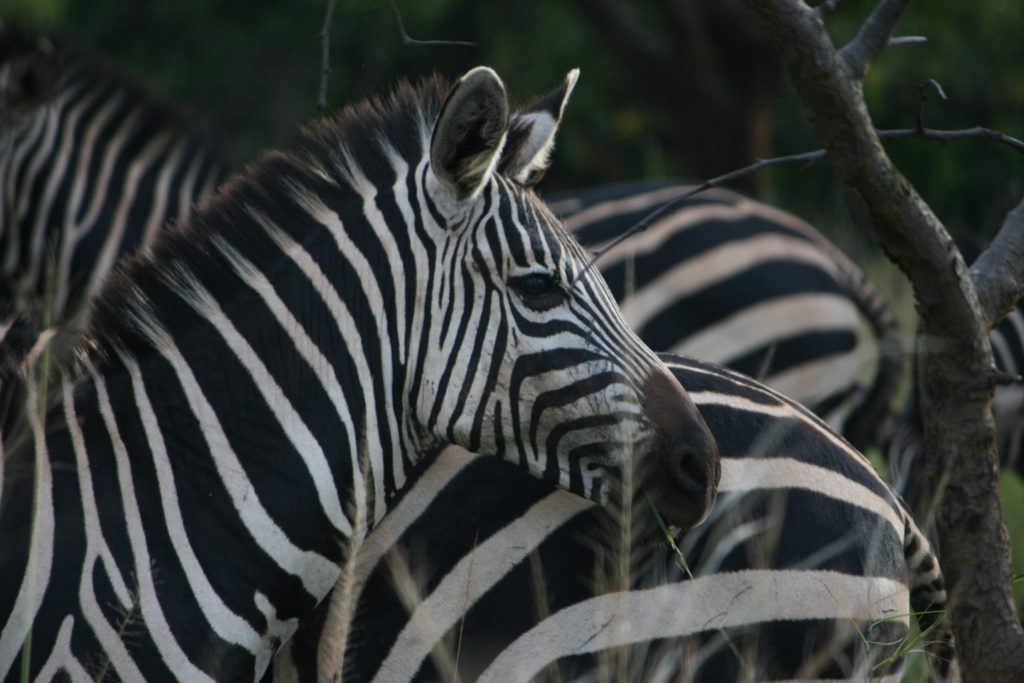
Time Needed
We highly recommend staying at least one night at the park and doing at least two game drives. The park is massive. We spent the whole first day (approx. 5 hours) exploring the southern part of the park and the second day in the north (approx. 8 hours).
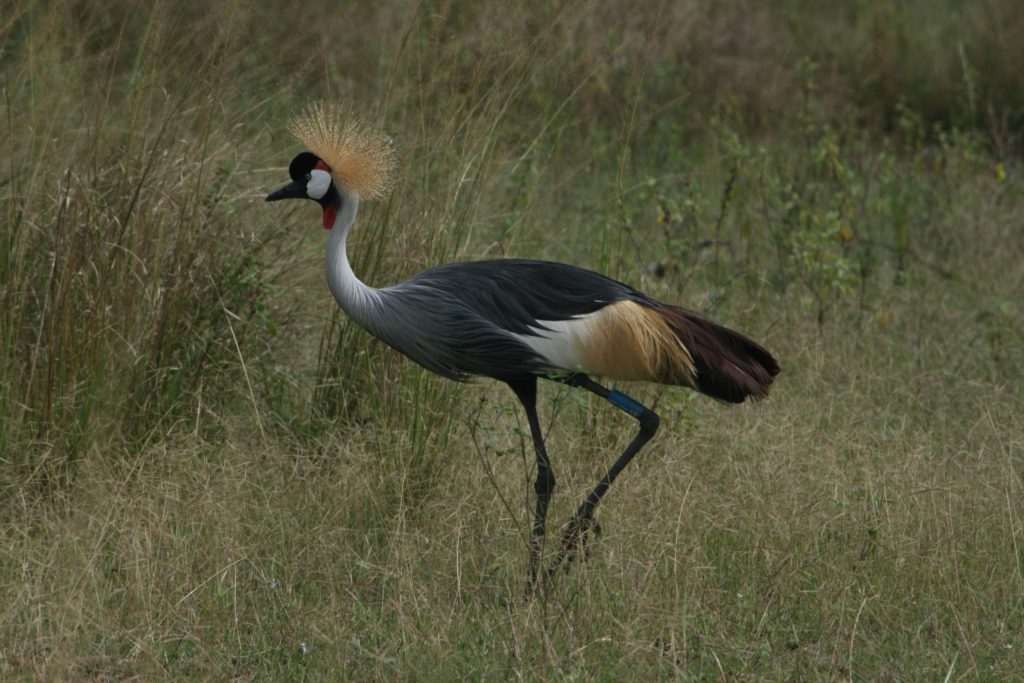
When checking in at the visitor centre, a ranger will provide a recommended driving itinerary to follow. They will also provide information about roads that need to be avoided due to poor conditions. You can purchase a map from the visitor centre or simply take a picture of the maps on the wall. We found the plains in the northern part of the park to be more fruitful for seeing the most wildlife. Also, completing a game drive just after sunrise is a great time to see animals.
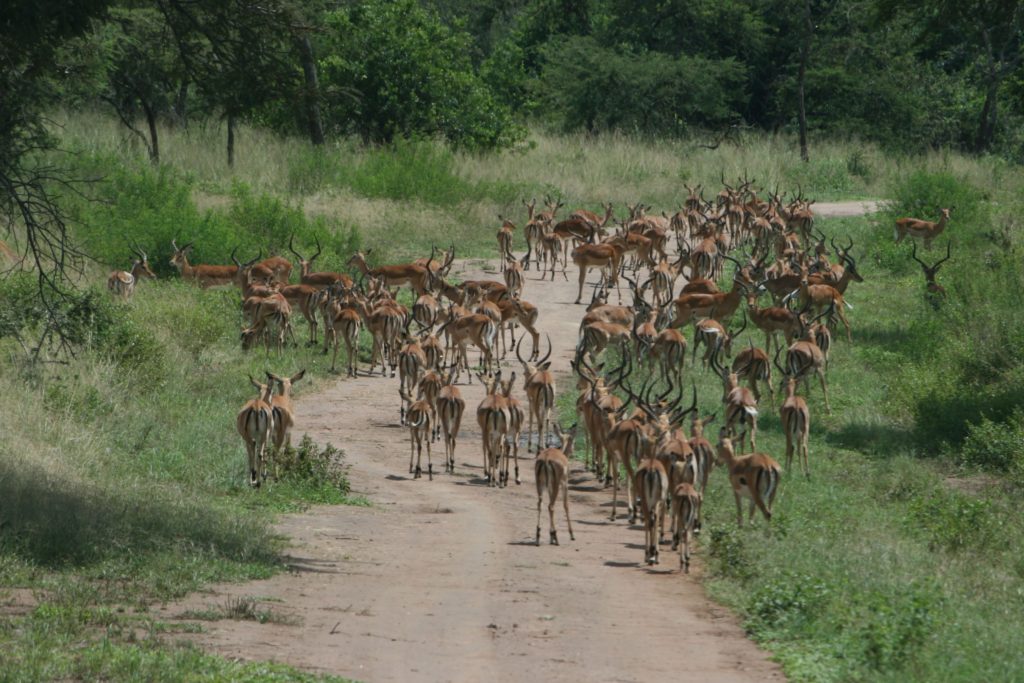
Cost
Entry fees for the park are $50 USD per person ($35 per person for Rwandan visitors). We also rented a 6 person tent and camped in the park ($20 USD each to camp). The park staff set up the tent for us and even started a fire! Self-drive safaris do not need to be booked in advance. Cars and drivers are also available for hire if required. See the following price list to see other options available to visitors.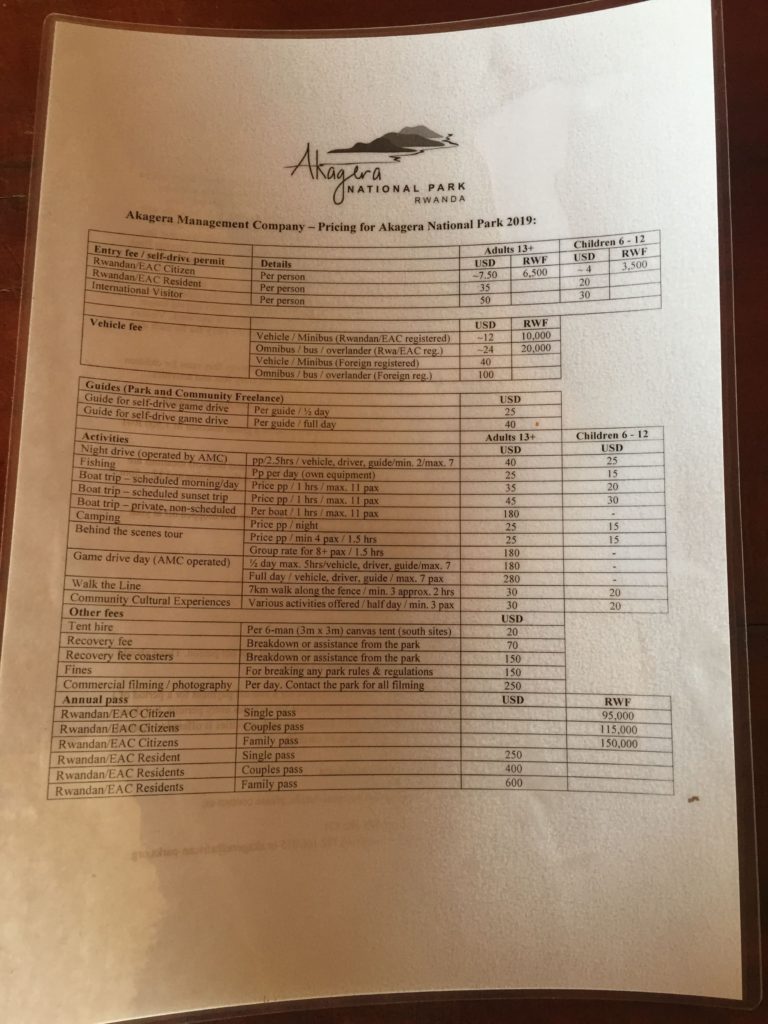
Camping
There are three different areas of the park in which camping is available. One is in the north side of the park, and the other two are in the south. For peace of mind, we chose the site on the south side of the park that was protected by an electric fence (the other one is not). We recommend leaving your campsite just after sunrise, as it is a great time to see animals.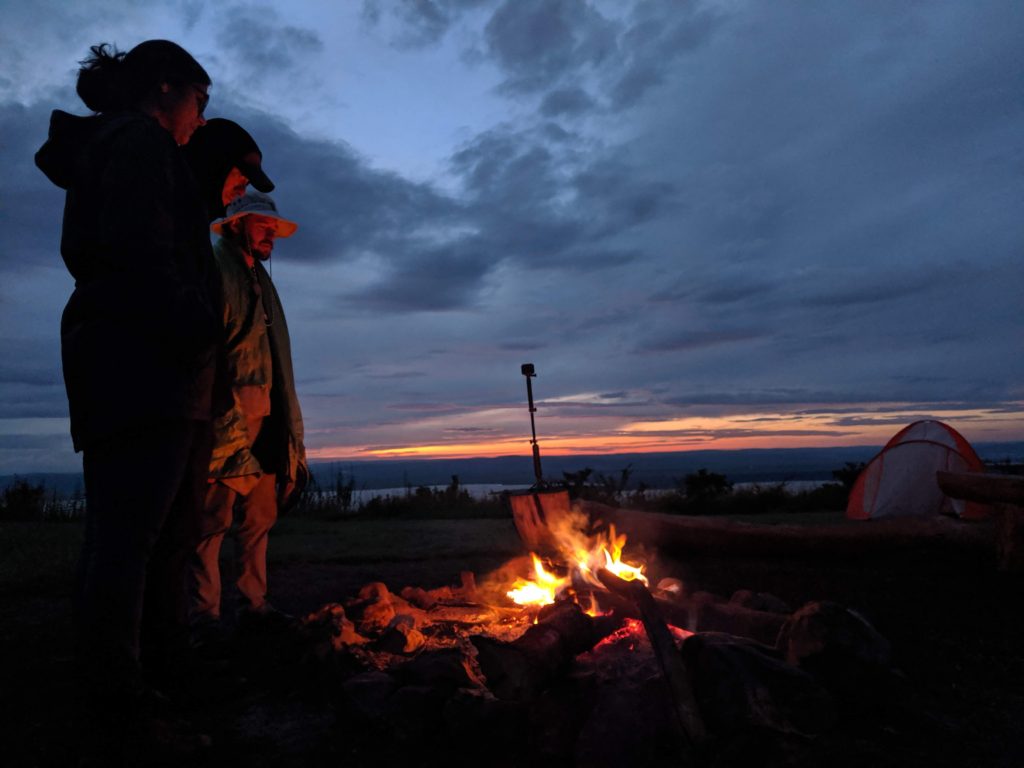
Vehicle Needed
It is vital to have a 4×4 SUV for a self-drive safari in Akagera. Road conditions can get dicey at times. We rented ours in Kigali. Be sure to drive slowly and keep your eyes peeled. It is useful to turn the car engine off while idling, as it helps deter tsetse flies from swarming the vehicle. We would recommend keeping the windows up if you know there are lots of flies nearby.
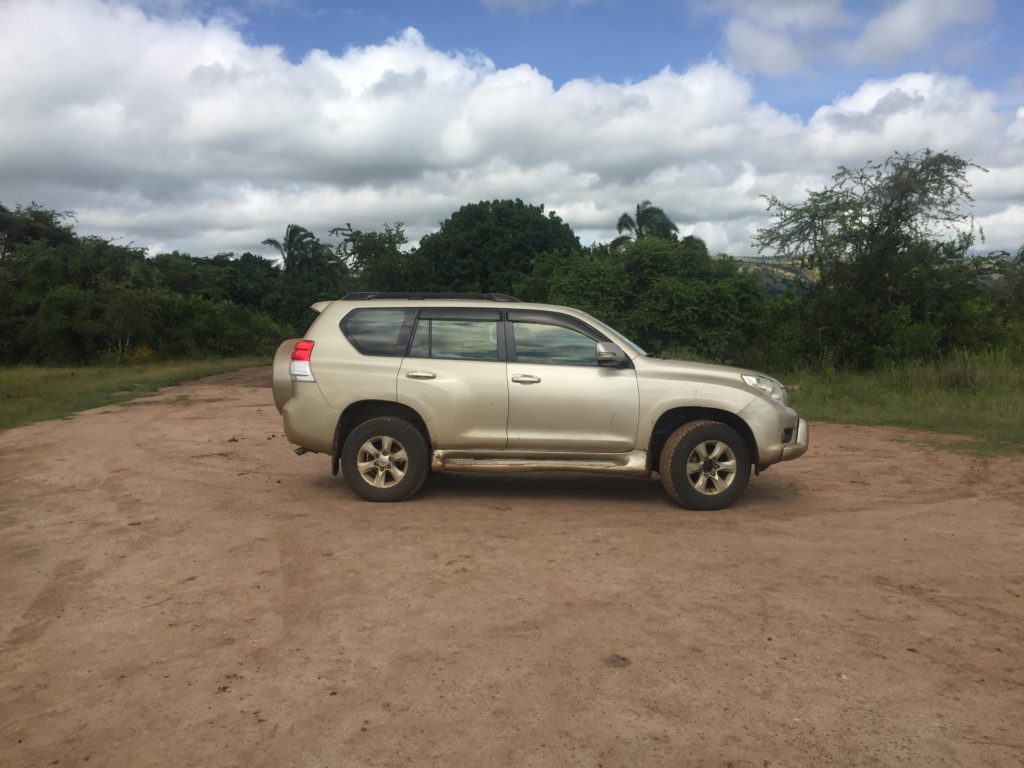
Also, the wild animals can be dangerous, so remaining in the vehicle and keeping a safe distance is imperative. At one point, we got fairly close to a hippopotamus, and as a show of dominance, it threatened to charge our vehicle! Luckily, we were able to slowly back away and the hippo waddled off.
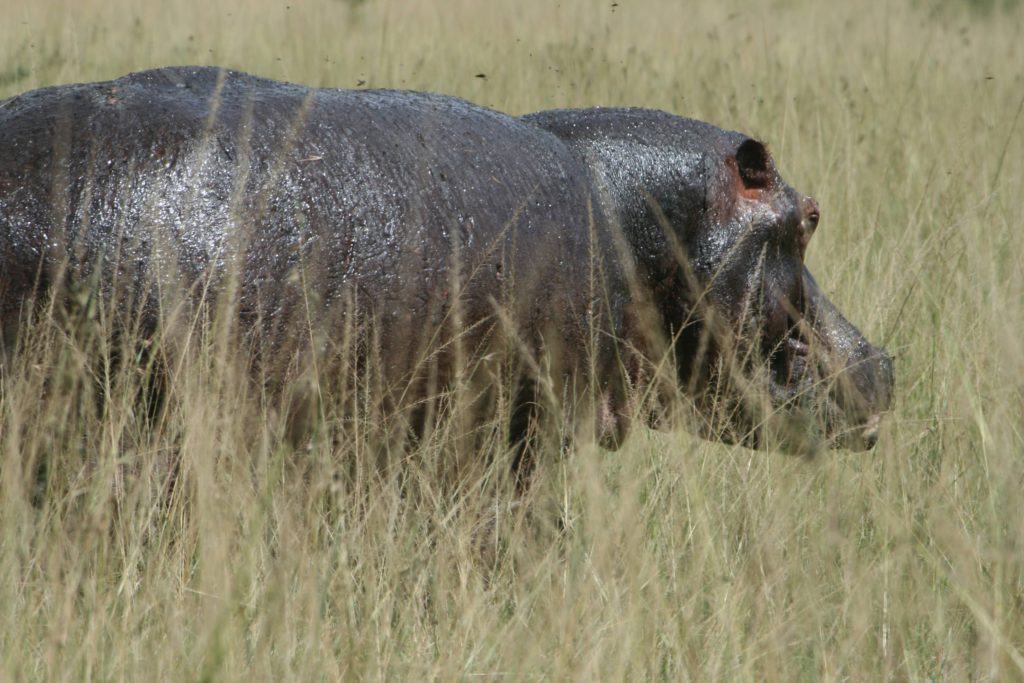
Navigating the Park
Be sure to pick up a map (or take a picture of the maps in the visitor centre). Be aware that even with a map, we sometimes found it difficult to locate road markers while navigating the park. Speak to a ranger at the visitor centre about recommended routes to drive and what roads to avoid.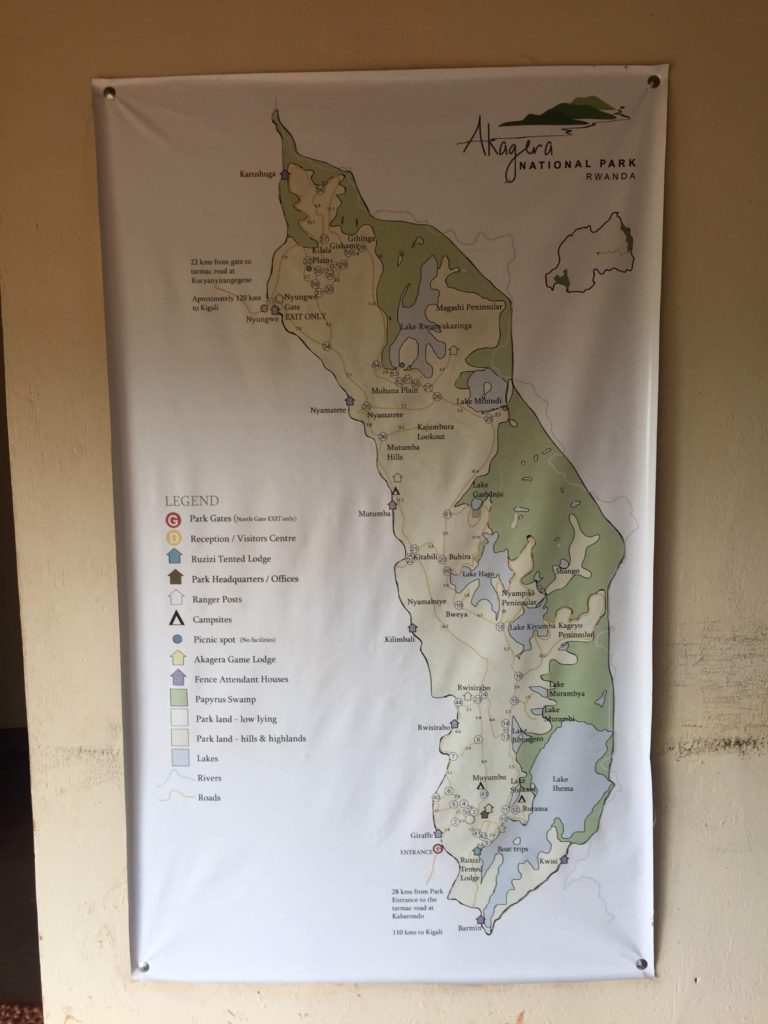
Packing
When packing, be sure to bring warm clothes for the evening, as it does get pretty chilly at night. In addition, load up on water, snacks and food. Safari drives are long and the midday sun can get hot. 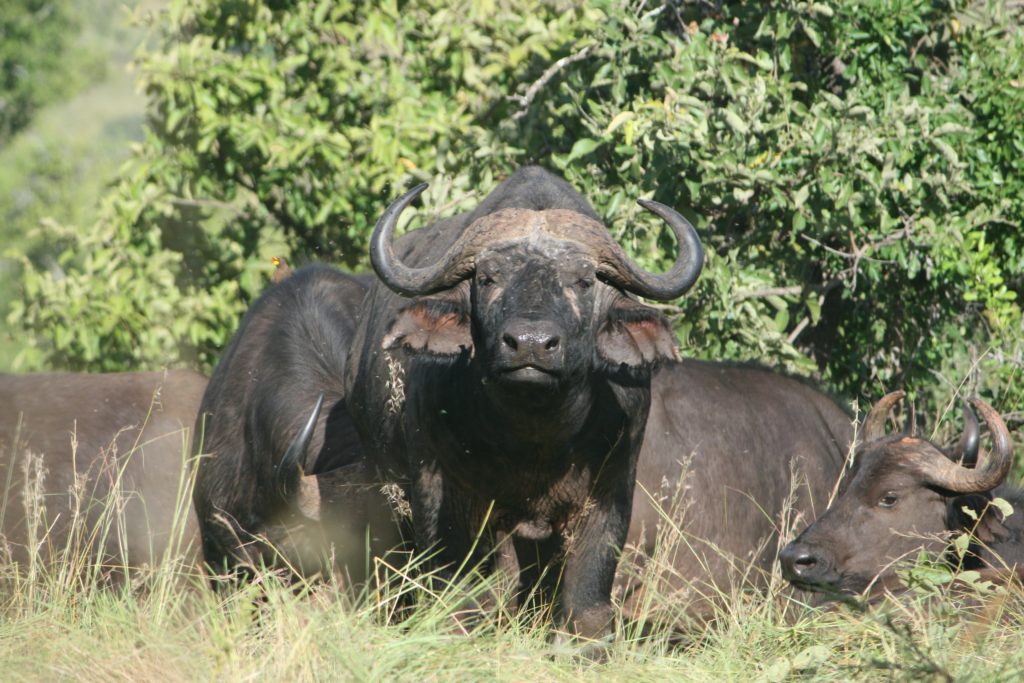 There are various picnic locations where you can exit the vehicle to have a bite to eat. Finally, try to avoid dressing in black or blue, as tsetse flies are attracted to those colours and can get rather annoying.
There are various picnic locations where you can exit the vehicle to have a bite to eat. Finally, try to avoid dressing in black or blue, as tsetse flies are attracted to those colours and can get rather annoying.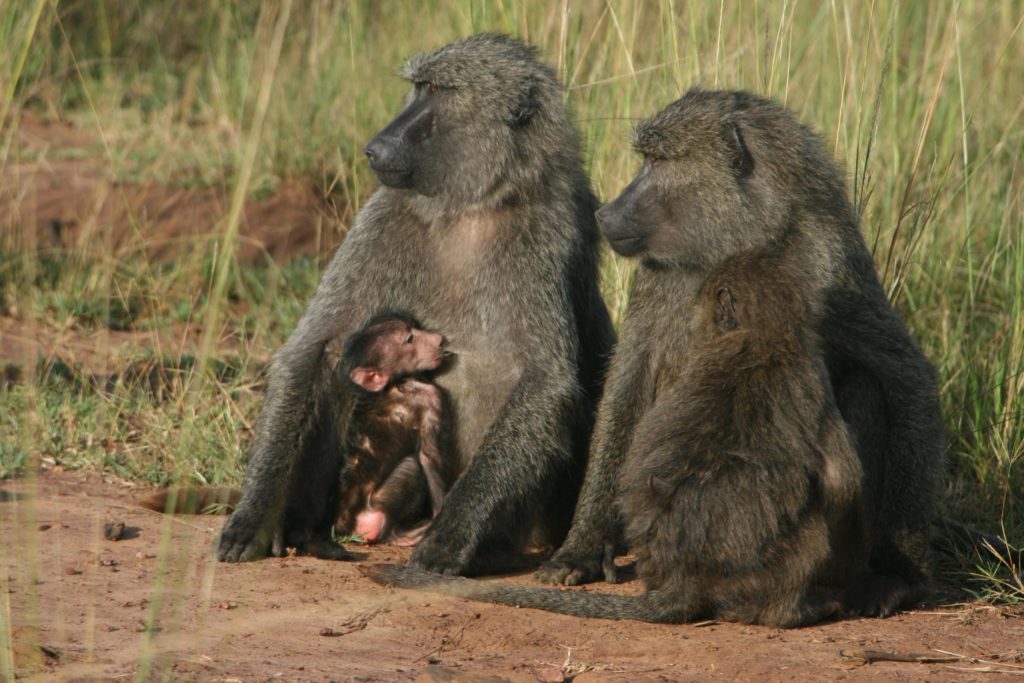
Wildlife
We saw a lot of wildlife during our self-drive safari in Akagera National Park. Unfortunately, we did not get to see any lions or rhinos, but we did see lots of species of birds, buffaloes, monkeys, giraffes, zebras, warthogs, impalas, elephants, hippos, and even a deadly black mamba snake. 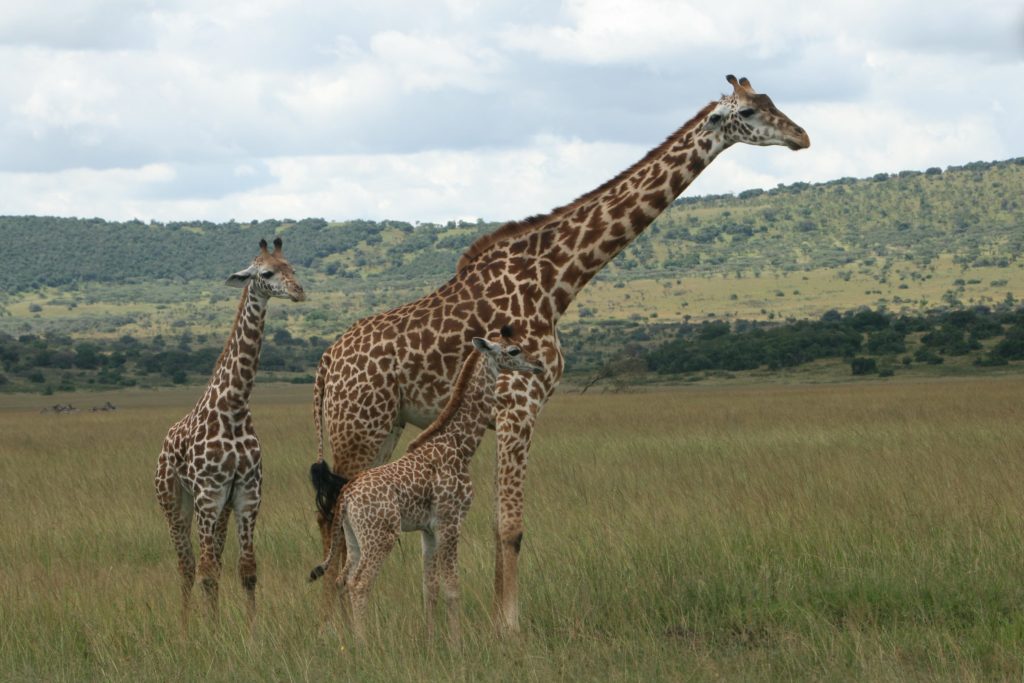 It was fun to watch hundreds of monkeys interacting with each other and to see a baby monkey, not more than a day old! Other highlights included a pair of impalas battling each other with their horns in the middle of the road!
It was fun to watch hundreds of monkeys interacting with each other and to see a baby monkey, not more than a day old! Other highlights included a pair of impalas battling each other with their horns in the middle of the road! 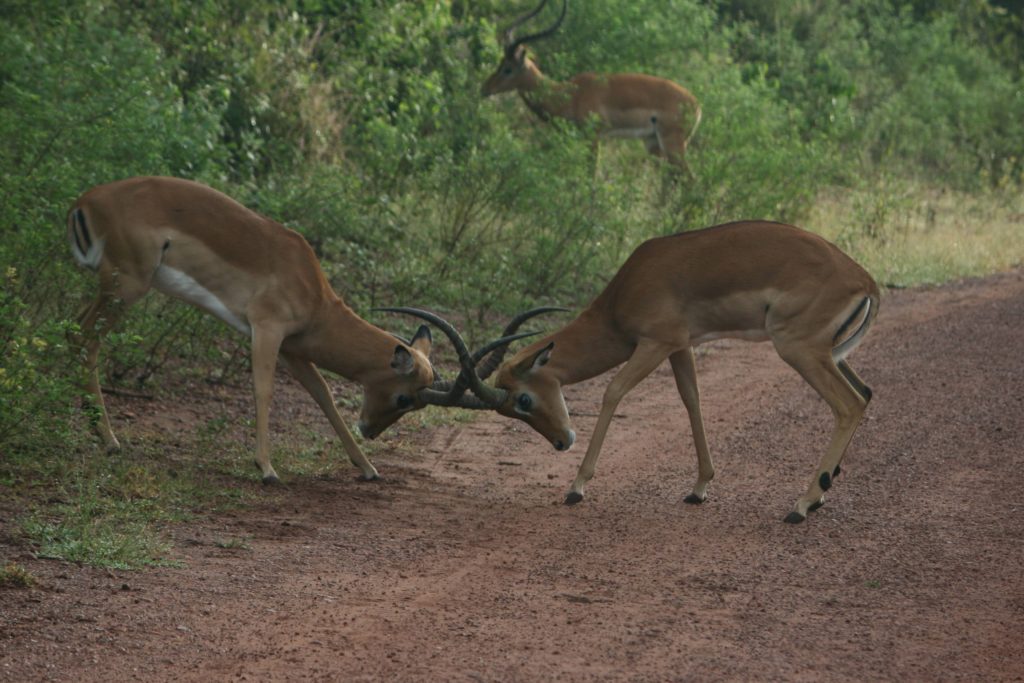 We also got very close to a massive, single bull elephant strolling down the road with great confidence.
We also got very close to a massive, single bull elephant strolling down the road with great confidence.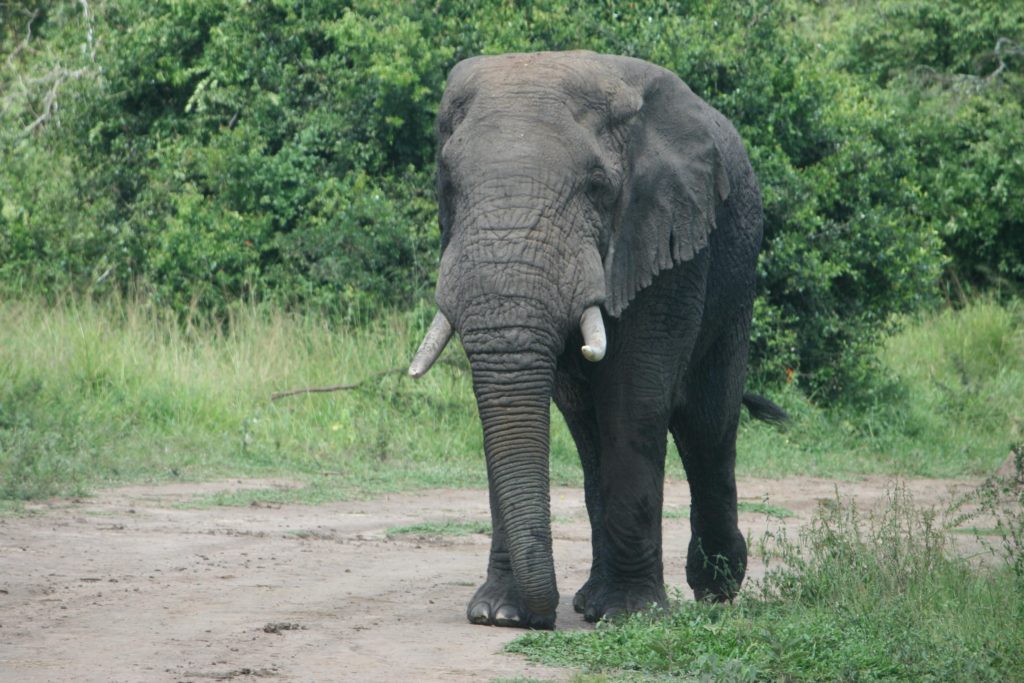
Final Thoughts
Akagera National Park is an excellent place to see wildlife, including the “big five”, in their natural habitat. Completing a self-drive safari is a fun and cost-effective way to enjoy the experience, while having the utmost flexibility. 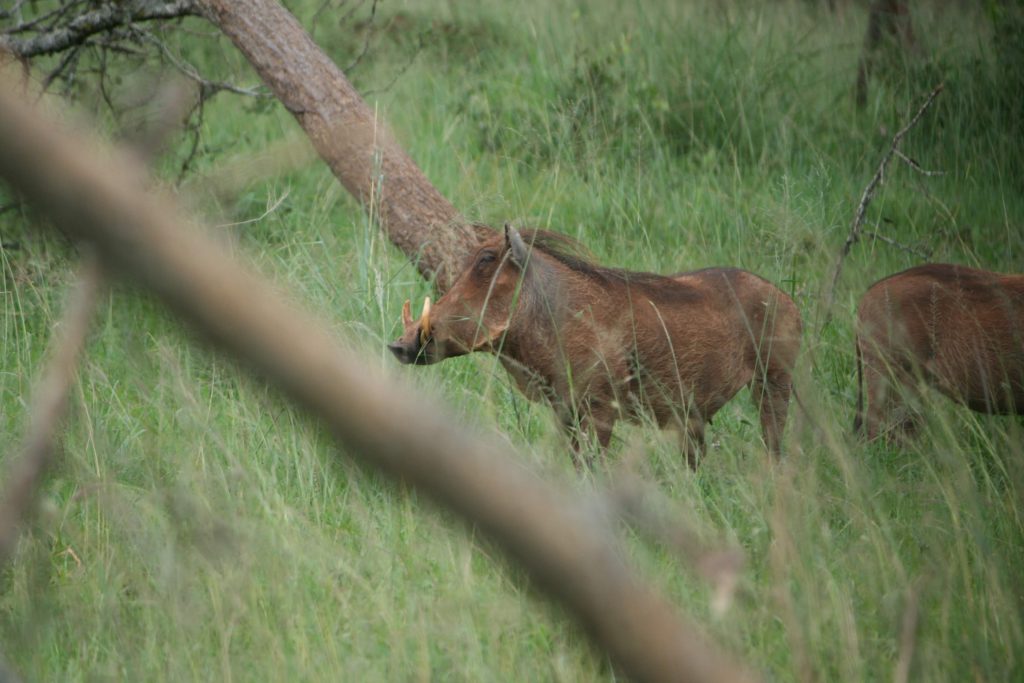 Be sure not to rush things. A minimum of two days is necessary to see the whole park and fully reap the benefits of the safari!
Be sure not to rush things. A minimum of two days is necessary to see the whole park and fully reap the benefits of the safari! 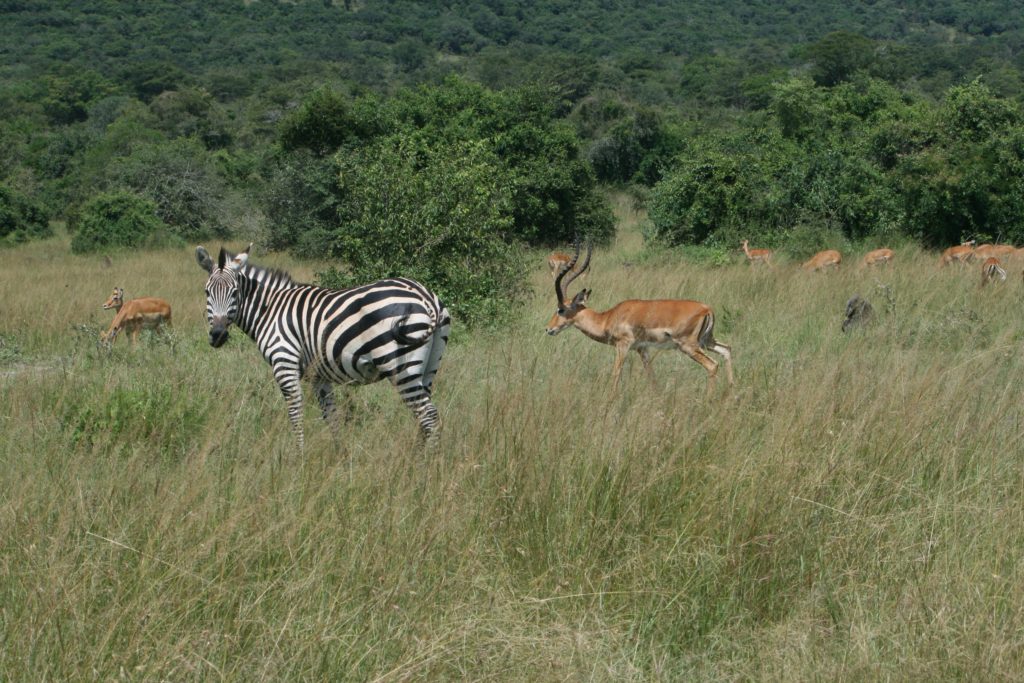 Finally, remember that wild animals can be unpredictable and potentially dangerous. Keep a safe distance and have fun on your self-drive safari in Akagera National Park!
Finally, remember that wild animals can be unpredictable and potentially dangerous. Keep a safe distance and have fun on your self-drive safari in Akagera National Park!
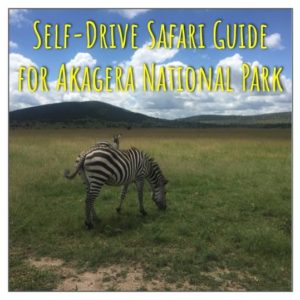
Disclosure: Please note that this site may contain affiliate links to products. We may receive a small commission for purchases made through these links at no extra cost to you.
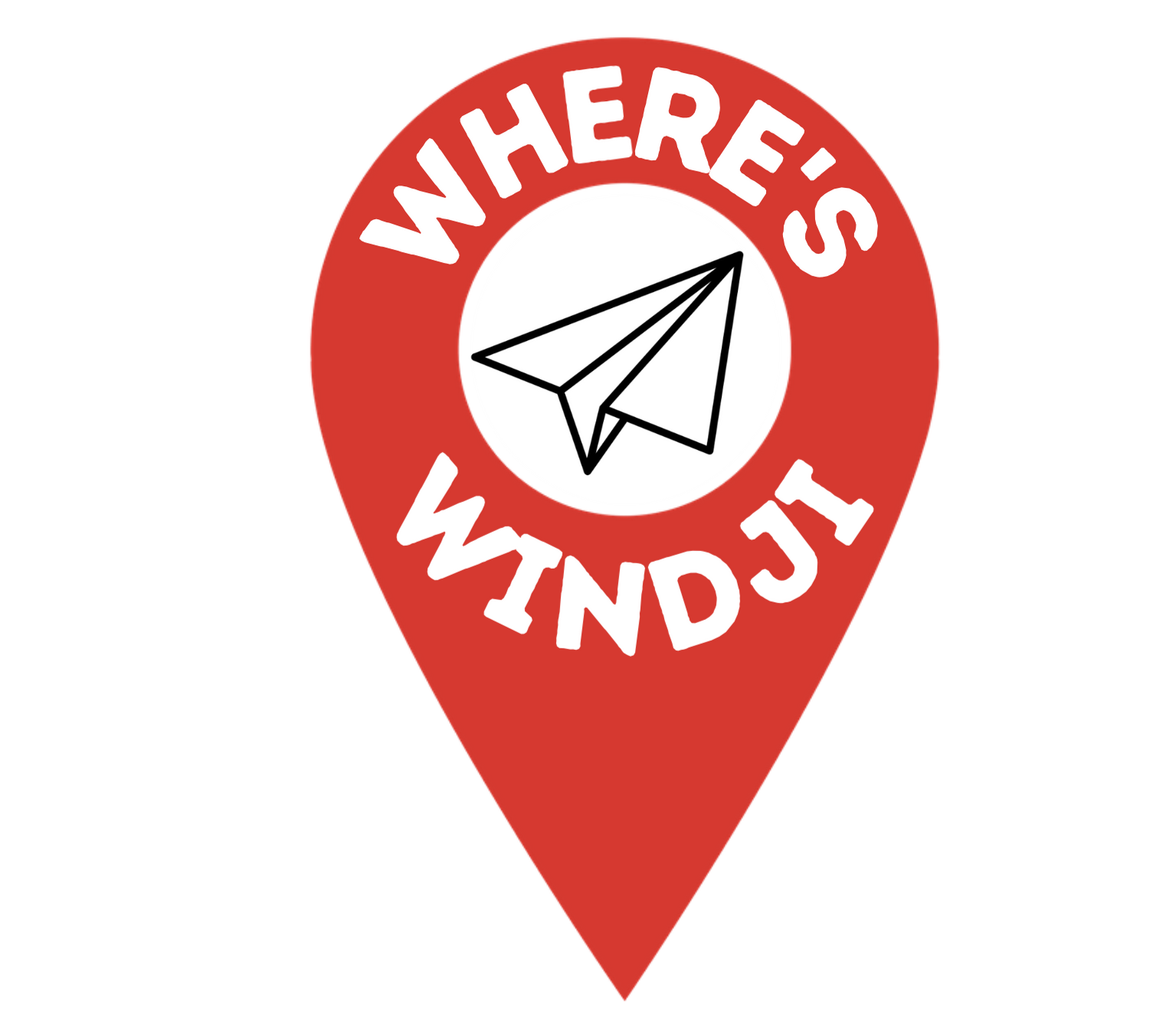
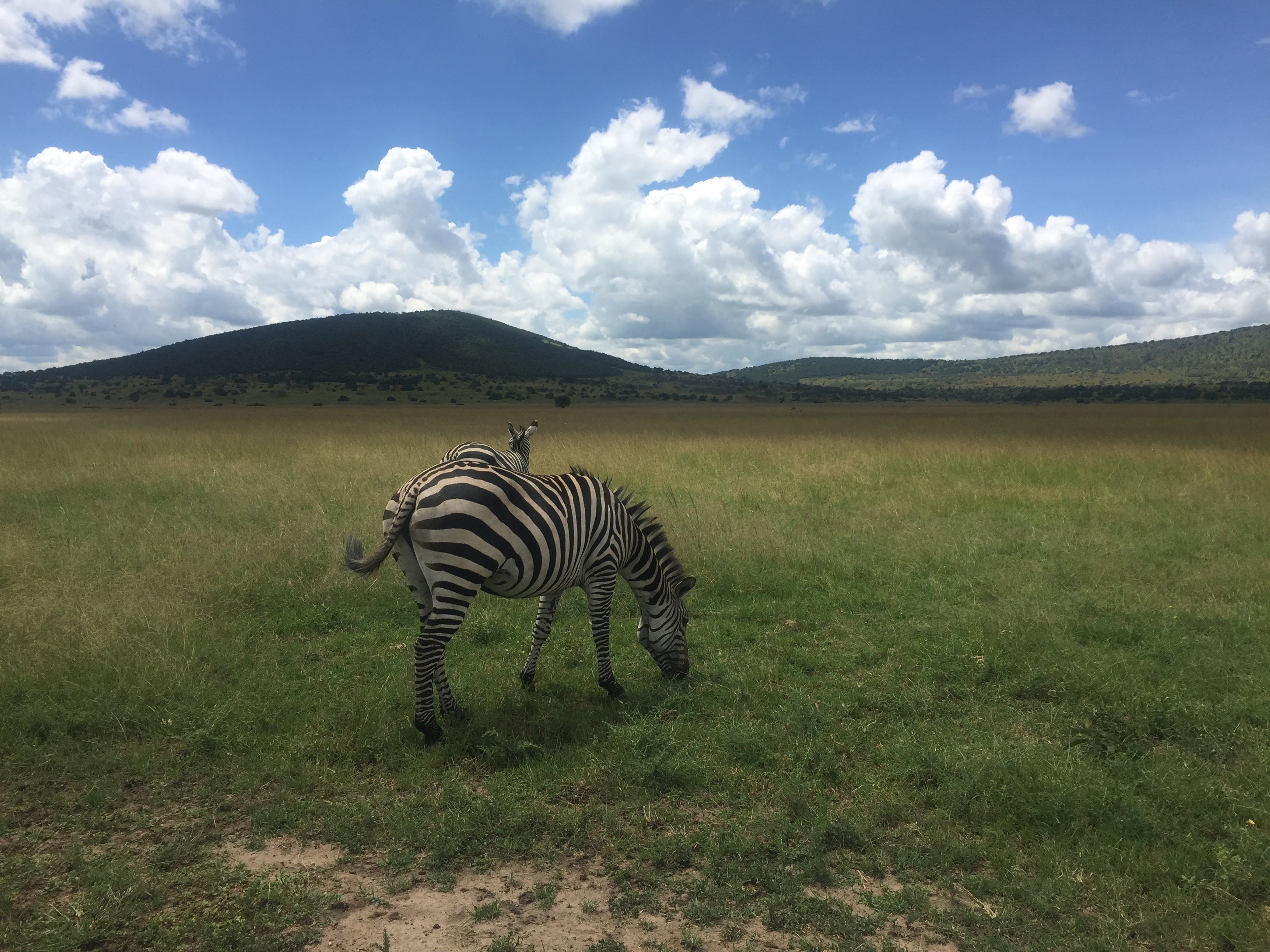
Be First to Comment